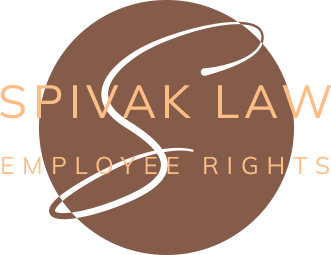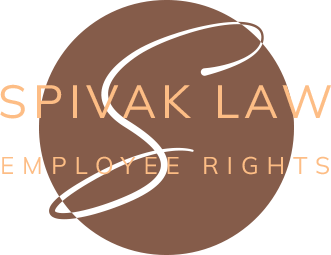
Los Angeles Discrimination Attorneys
Serving clients throughout California
Many employers wrongfully terminate employees because of their race, religion, disability, age or gender. Such discharges are against California and federal law.
Discrimination can be defined as taking action against a person based on the group to which that person belongs rather than on individual merit. Discrimination takes many forms. Whether racial, age, disability, religious or sexual, discrimination in employment is illegal in California.
You cannot be fired from a job because of your
- Sex (gender)
- Sexual Orientation (sexual preference)
- Gender Identity & Expression
- Age
- Religion
- Race
- Color
- National Origin
- Ethnicity
- Disability
- Military Service
- Immigration Status
- Marital Status
- Pregnancy
- Union Activities
- Family and Medical Leaves of Absence
- Medical Condition
These are protected categories or classes under the law. Employees who are fired for objecting to discrimination may bring claims of retaliation against their employer. This is true even if the employee cannot prove the underlying discrimination claim.
Download Printable PDF Page Here

What Do You Have to Do Before Filing a Lawsuit'?
Proving in court that a termination was discriminatory is often very difficult. Direct evidence of discrimination is generally hard to come by. Most people (even the worst bigots) are careful enough at work not expressly state their discriminatory feelings. An attorney with substantial experience litigating discrimination claims will likely be necessary to locate evidence of discrimination.
In California, a victim of discrimination must complain to the California Civil Rights Department or the United States Equal Employment Opportunity Commission (EEOC) before bringing a lawsuit. It is important that you consult with a legal professional before taking action because strict deadlines and pleading rules apply to such claims. Generally, a victim of discrimination must complain to the California Civil Rights Department within one year of the discriminatory act. In cases of wrongful termination, the victim must bring his California Civil Rights Department complaint of discrimination within one year of the discharge decision. Under the federal discrimination laws, a complaint to the EEOC must usually be made within 90 days. Federal government employees are subject to different complaint procedures that require an internal complaint before a discrimination complaint to the EEOC is made.
If you suffered workplace discrimination, you may be entitled to substantial monetary compensation and other remedies from your employer. A victim of a discriminatory firing can sue for her emotional distress, humiliation, past and future lost wages, punitive damages, attorney fees and costs. Because the prevailing plaintiff in a discrimination lawsuit can recovery her attorney fees and costs from her employer, discrimination and wrongful termination attorneys will usually accept such cases on a straight “contingency” basis (no recovery = no fee to the attorney).
For more information on the laws against discrimination, check out the following laws:
- The California Fair Employment and Housing Act (FEHA)
- Title VII of the Civil Rights Act of 1964 (Title VII)
- The Age Discrimination in Employment Act (ADEA)
- The Family and Medical Leave Act (FMLA)
- The Americans With Disabilities Act (ADA)
- The Equal Pay Act (EPA)
- The Civil Rights Act of 1991
- The Rehabilitation Act
- Genetic Information Nondiscrimination Act of 2008 (GINA)
If you are a victim of workplace discrimination, please call us for help. Contact us online or call (877) 242-7034 for a free initial consultation. Hablamos Español (877) 452-0078.
Unlawful Discriminatory Acts
In addition to discriminatory terminations, the following discriminatory acts are unlawful:
- hiring;
- compensation, assignment, or classification of employees;
- transfer, promotion, layoff, or recall;
- job advertisements;
- recruitment;
- testing;
- use of company facilities;
- harassment;
- training and apprenticeship programs;
- fringe benefits;
- pay, retirement plans, and disability leave; or
- other terms and conditions of employment
A discriminatory termination can be proven by direct and indirect evidence. Direct evidence may come in the form of discriminatory comments such as:
- “She’s too old to work here” (age discrimination)
- “This is a man’s job” (gender discrimination)
- “I need a white guy for the promotion” (race discrimination)
- “Our workers from south of the border are just plain lazy” (national origin discrimination)
- “Only Koreans need apply” (national origin discrimination)
- “You can’t teach an old dog new tricks” (age discrimination)
- Referring to a female employee as a “bitch” (sex discrimination)
- “I just know that she’ll start slacking off now that she’s pregnant” (pregnancy discrimination)
Indirect evidence – also known as circumstantial evidence – may come in the form of:
- High numbers of employees of a specific race being terminated (statistical evidence)
- Termination of an employee for a false reason (pretext)
- Discharge of a long term employee soon after the employer learns of the employee’s membership in a protected class that may not have been evident earlier in the employment relationship (common in disability, sexual orientation, and religious discrimination claims)
- Harassment of employees of a particular race, ethnicity, age or gender
Victims of discrimination at work should consider the following action to stop or address the discrimination:
- Save evidence of the discrimination (photos, email or test messages, etc.)
- Document the discrimination (time, date, witnesses, details)
- Bring it to the attention of a supervisor, manager or human resources representative
- Request that the employer take action against the discriminating employee or supervisor
- Consult with an attorney

Types Of Discrimination Cases we handle


